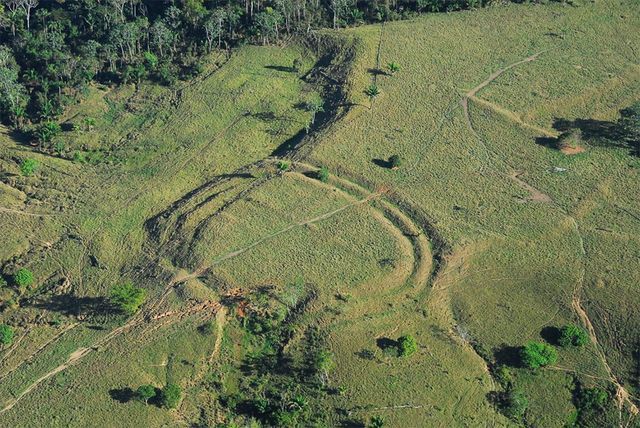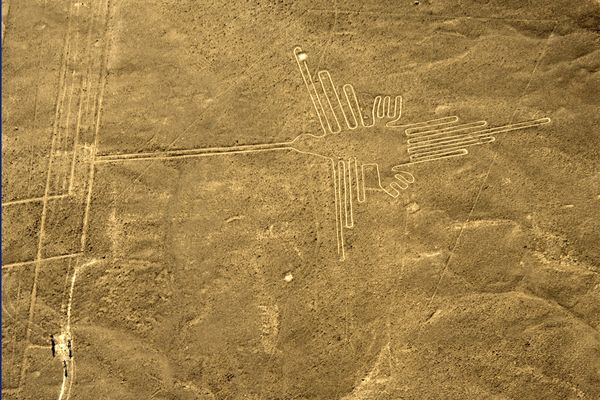
For archaeologists working on getting to the bottom of what people were up to thousands of years ago in the Amazon, there are a lot of unknowns. How is anybody supposed to find clues about what those people were doing when virtually all the evidence is covered up by the most biodiverse ecosystem in the world?
A new paper published in the Proceedings of the National Academy of Sciences presents evidence that some ancient earthworks, or geoglyphs, uncovered over the past 25 years as a result of the leveling of the Brazilian rainforest, suggest that the Amazon was being land-managed for millennia before modern people brought in our forest-demolishing machinery. And it's very possible our ancient forerunners were better at it than we are today.
Advertisement
The 450 geoglyphs are distributed over an area of about 5,000 square miles (13,000 square kilometers) in the Acre state, located in the western Brazilian Amazon. These giant, trenched enclosures measure up to 12 yards (11 meters) wide and 13 feet (4 meters) deep. They were dug in a variety of shapes — circles, squares, ovals. Their discovery kicked off in the 1980s when rainforests were being cleared for cattle ranching, and many since have been discovered with Google Earth as satellite data for the area has become available.
Their purpose has long confounded archaeologists: Why would any civilization require a perfectly octagonal moat in the middle of the rainforest? Given the relative scarcity of human artifacts around them, they probably weren't village sites or military trenches. But their utility to ancient forest dwellers didn't interest the authors of this new paper as much as the obviously intensive land management that was required clear enough space to build them 2,000 years ago.
"We're not the first to suggest this, but it is a view still held by many people — public and scholars alike — that the Amazon rainforests have never been touched by humans," says coauthor Dr. Jennifer Watling, an archaeologist at the Museum of Archaeology and Ethnography at the University of São Paulo, Brazil. "Archaeologists have been pointing towards human presence and influence in Amazonia for over 25 years. However, the majority of ecologists and biologists who study rainforest composition still concentrate on the effects of natural factors like soils and climate, and rarely include humans in the picture."
Watling and her team think the geoglyphs were sporadically used public gathering places where ceremonial and ritual activities took place. However, what they really wanted to know is how much trouble the ancient people went through to build these things. To find out, they created a 6,000-year land use history at two sites by examining the soils.
Taking dirt from inside and outside of the two geoglyphs, they analyzed tiny silica plant fossils called phytoliths to figure out what plants dominated the area at different times. They also looked for charcoal to figure out when and how much these prehistoric peoples burned the forest to clear space, and ran carbon-stable isotope analyses to assess how dense the vegetation was in different areas over time.
The researchers found that around 4,000 years ago the forests in the area were mostly comprised of bamboo, and that humans began burning small sections to make room for agriculture and to construct these geoglyphs. They even weeded out underbrush and cut down trees that were of no use to them, in order to make room for trees like palms that provided useful materials and food.

In short, compared with modern agroforesters who have taken it upon themselves to mow down about 20 percent of the largest rainforest in the world to date, the ancient Amazonians were surprisingly savvy practitioners of their craft:
"Deforestation in this area today is complete and long-lasting," says Watling. "In our record, we found that deforestation, when it occurred, was temporary and on a smaller spatial scale. The emphasis in the past was on managing the forest to concentrate useful resources like trees."
So why are we mowing down the rainforests, and could we be better managing the process? It's worth considering, and perhaps looking to the past for guidance.
Advertisement
